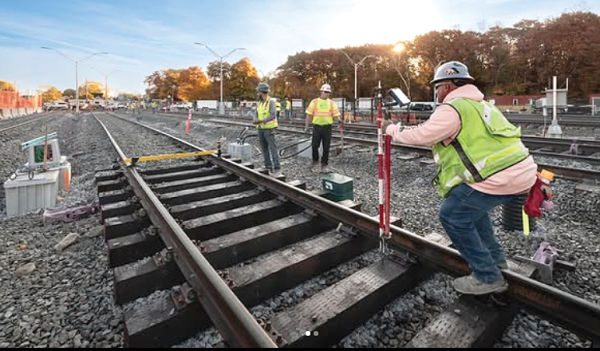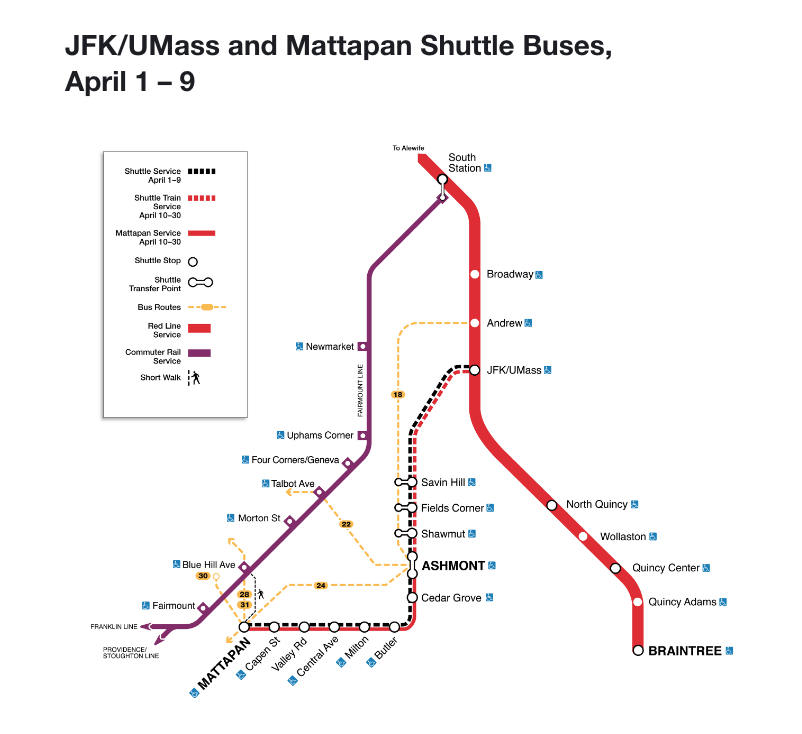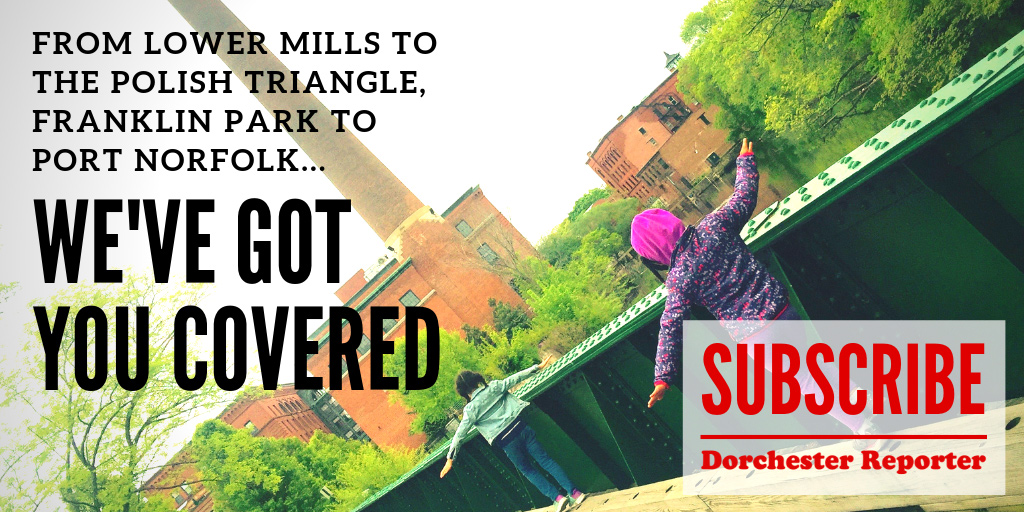March 26, 2025

A month of disruptions and delays on the MBTA’s Red Line begins on Tuesday, April 1 as train service is suspended entirely for a period of nine days to allow for a surge of repairs and improvements between JFK-UMass and Ashmont stations.
The work will include $1.5 million in repairs to three bridges in the Fields Corner area that carry the Red Line rails over Dorchester Avenue, Adams Street, and Geneva Avenue.
Replacement bus service will totally replace normal subway service between April 1 and April 9. Starting on April 10, so-called “shuttle trains” will be used along the Ashmont branch for the rest of the month, resulting in longer-than-usual commutes and wait times. The shuttle trains will go back and forth between Ashmont and JFK-UMass on both tracks, but will result in “longer wait times” and extend commute times for three additional weeks.

In a statement explaining the plan issued last week, a T memo said, “For example, a rider traveling to Park Street from Mattapan should budget at least an additional 45-60 minutes of travel time in addition to their regular commute.
The additional three weeks of shuttle trains will allow for crews to focus on a section of “crossover track” area near Ashmont that needs to be replaced, according to a source familiar with the project. The so-called “Ashmont Diamond” allows trains to switch tracks and turn-around from the southbound to the northbound track.
The bridge work in Fields Corner will also prompt some lane and sidewalk closures underneath and around the bridges that will likely continue into May. Crews will work 24 hours a day during the full closure of the Ashmont branch, according to a fact sheet published on the T’s website.
The nine-day pause of train service is the second full shut-down on the Ashmont leg. The first was a 16-day suspension in October 2023 that MBTA officials say allowed them to replace rails, make station improvements, and eliminate “slow-zones” by surging construction resources into a compacted period. Similar surges have been focused on other sections of the Red Line and Orange Line in the last two years.


